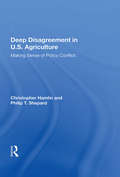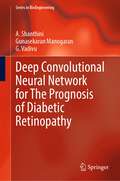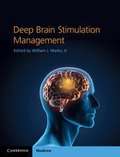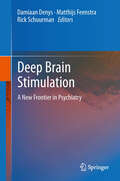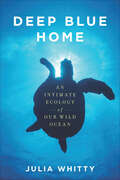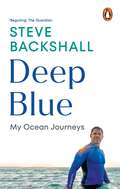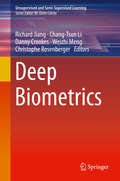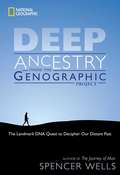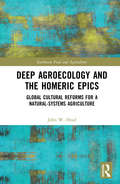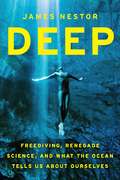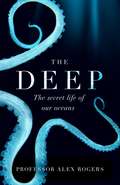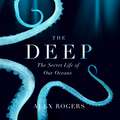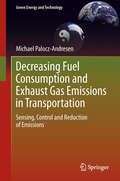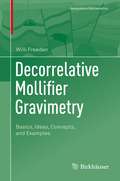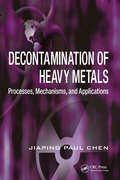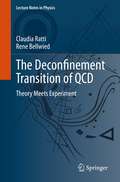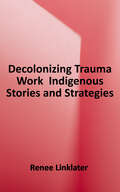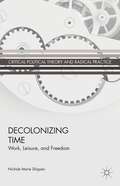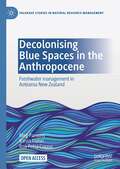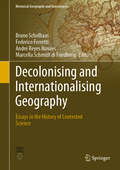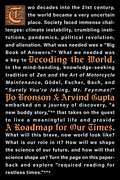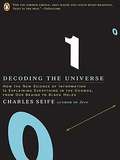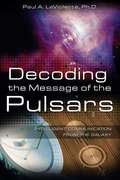- Table View
- List View
Deep Disagreement In U.s. Agriculture: Making Sense Of Policy Conflict
by Christopher HamlinThis book exemplifies disagreements in agricultural research and agricultural policies in the U.S. It hopes to expand the capacity for critical discussion on matters of agriculture and attempts to open a path to more fruitful communication among participants in agricultural controversy.
Deep Convolutional Neural Network for The Prognosis of Diabetic Retinopathy (Series in BioEngineering)
by A. Shanthini Gunasekaran Manogaran G. VadivuThis book discusses a detailed overview of diabetic retinopathy, symptoms, causes, and screening methodologies. Using a deep convolution neural network and visualizations techniques, this work develops a prognosis system used to automatically detect the diabetic retinopathy disease from captured retina images and help improve the prediction rate of diagnosis. This book gives the readers an understanding of the diabetic retinopathy disease and recognition process that helps to improve the clinical analysis efficiency. It caters to general ophthalmologists and optometrists, diabetologists, and internists who encounter diabetic patients and most prevalent retinal diseases daily.
Deep Brain Stimulation Management
by William J. Marks Jr."Deep Brain Stimulation Management is a practical guide to the use of this paradigm-shifting therapy for movement disorders, including Parkinson's disease, essential tremor, and dystonia. This title is an essential resource for clinicians who wish to begin utilizing DBS, as well as current practitioners seeking to improve their understanding and application of the technique. Highly illustrated and in full color throughout, this comprehensive book covers the key aspects of DBS practice, including patient selection, device programming and activation to achieve optimum symptom control, long-term management, and troubleshooting. With contributions from some of the most experienced clinical leaders in the field of DBS and extremely practical content, this is an essential reference text for any clinician working with DBS patients"--Provided by publisher.
Deep Brain Stimulation
by Rick Schuurman Matthijs Feenstra Damiaan DenysDeep Brain Stimulation: A New Frontier in Psychiatry provides an overview of current developments and the future possibilities of deep brain stimulation for patients with therapy-refractory psychiatric disorders. The side-by-side presentation of clinical applications and animal research provides a truly translational approach. Also included is a special chapter on the ethical issues involved in deep brain stimulation in psychiatry. Deep brain stimulation of selected brain areas has been shown to result in a substantial improvement of symptoms and quality of life in patients suffering from obsessive-compulsive disorder, major depressive disorder and drug addiction. Although it is still an experimental therapy and the number of psychiatric patients that are treated is low, its effectiveness and safety makes deep brain stimulation the most promising therapy for treating other serious and life-threatening psychiatric conditions.
Deep Blue Home: An Intimate Ecology of Our Wild Ocean
by Julia Whitty“A lovely, soft-spoken book about the ‘joy, inspiration, wonder, laughter, ideas’ that come from relating to Earth’s ‘nonhuman world.’”—Kirkus Review“Here is a writer of power and persuasion; one worthy of the Rachel Carson mantle. Whitty allows us to peer into the ecological web of the mysterious World Ocean, sharing her passion for the continuation of the ocean's life-essential fabric.”—Linda Lear, author of Rachel Carson: Witness for Nature “Rhythmic, poetic, transporting, and illuminating, this is the sacred memoir of a woman among islands of miracles, yearning with all her heart to be right where she is.”—Carl Safina, author of Song for the Blue Ocean, The View From Lazy Point“An illuminating exploration of the swirling currents connecting oceans, science, people, and history, bearing the reader on a unique voyage of discovery above and below the waves.”—Daniel Bennett, President of The Explorers Club —
Deep Blue: My Ocean Journeys
by Steve BackshallTake a deep breathSteve Backshall was nine years old the first time he saw a shark, while on holiday with his family in Malaysia. It was the beginning of a life-long fascination with these 'lords of the sea', and the oceanic life around them. His career as one of the world's most popular naturalists and explorers has taken him to countless underwater places, many never before seen by others. And he's also been witness to the startling decline in fortune of our oceans' wild inhabitants over the past fifty years.Deep Blue is a book a lifetime in the making: a remarkable blend of memoir, travel, and marine and environmental science that takes us on an unforgettable tour of the many worlds of aquatic life: from underwater deserts and rainforests to the evolution of ocean heroes like the sea turtle and the Great White, from the genesis of ocean life to the rapidly declining state of white polar seas and coral reefs. It's both a love letter to our precious oceans and rallying cry for what we must to do save them.
Deep Biometrics (Unsupervised and Semi-Supervised Learning)
by Richard Jiang Danny Crookes Chang-Tsun Li Weizhi Meng Christophe RosenbergerThis book highlights new advances in biometrics using deep learning toward deeper and wider background, deeming it “Deep Biometrics”. The book aims to highlight recent developments in biometrics using semi-supervised and unsupervised methods such as Deep Neural Networks, Deep Stacked Autoencoder, Convolutional Neural Networks, Generative Adversary Networks, and so on. The contributors demonstrate the power of deep learning techniques in the emerging new areas such as privacy and security issues, cancellable biometrics, soft biometrics, smart cities, big biometric data, biometric banking, medical biometrics, healthcare biometrics, and biometric genetics, etc. The goal of this volume is to summarize the recent advances in using Deep Learning in the area of biometric security and privacy toward deeper and wider applications.Highlights the impact of deep learning over the field of biometrics in a wide area;Exploits the deeper and wider background of biometrics, such as privacy versus security, biometric big data, biometric genetics, and biometric diagnosis, etc.;Introduces new biometric applications such as biometric banking, internet of things, cloud computing, and medical biometrics.
Deep Ancestry: Inside the Genographic Project
by Spencer WellsLaunched in 2005, the Genographic Project is the largest genetic study of human migration ever mounted. In this accessible text, Project Director and National Geographic Explorer-in-Residence Spencer Wells provides an overview of what is understood so far and describes what scientists hope to learn as the project progresses. He uses the stories of five individual program participants as examples for explaining how historical details are gleaned from DNA and exploring the larger issues involved in the research. Annotation ©2007 Book News, Inc., Portland, OR (booknews.com)
Deep Agroecology and the Homeric Epics: Global Cultural Reforms for a Natural-Systems Agriculture (Earthscan Food and Agriculture)
by John W. HeadDrawing on the Homeric epics, this multidisciplinary work reveals the cultural transformations which need to take place in order to transition from today’s modern extractive agricultural system to a sustainable natural‐systems agriculture. In order to provide an imaginative foundation on which to build such a cultural transformation, the author draws on the oldest and most pervasive pair of literary works in the Western canon: the Iliad and the Odyssey. He uses themes from those foundational literary works to critique the concept of state sovereignty and to explain how innovative federalism structures around the world already show momentum building toward changes in global environmental governance. The book proposes a dramatic expansion on those innovations, to create eco‐states responsible for agroecological management. Drawing from many years of experience in international institutions, the author proposes a system of coordination by which an international agroecology‐focused organization would simultaneously (i) avoid the shortcomings of the world’s current family of powerful global institutions and (ii) help create and implement a reformed system of local landscape‐based agriculture wholly consistent with ecological principles. Acknowledging the difficulty of achieving reforms such as these, the author suggests that a new cultural‐conceptual narrative can be constructed drawing on values set forth 2,700 years ago in the Homeric epics. He explains how these values can be reimagined to drive forward our efforts in addressing today’s the climate and agricultural crises in ways that reflect, not reject, the natural processes and relationships that make the Earth a living planet. This book will be of great interest to students, academics and policymakers addressing issues of agrarian values, environmental and agricultural law, environmental restoration, agroecology, and global institutional reform.
Deep
by James NestorWhile on assignment in Greece, journalist James Nestor witnessed something that confounded him: a man diving 300 feet below the ocean's surface on a single breath of air and returning four minutes later, unharmed and smiling.This man was a freediver, and his amphibious abilities inspired Nestor to seek out the secrets of this little-known discipline. In Deep, Nestor embeds with a gang of extreme athletes and renegade researchers who are transforming not only our knowledge of the planet and its creatures, but also our understanding of the human body and mind. Along the way, he takes us from the surface to the Atlantic's greatest depths, some 28,000 feet below sea level. He finds whales that communicate with other whales hundreds of miles away, sharks that swim in unerringly straight lines through pitch-black waters, and seals who dive to depths below 2,400 feet for up to eighty minutes--deeper and longer than scientists ever thought possible. As strange as these phenomena are, they are reflections of our own species' remarkable, and often hidden, potential--including echolocation, directional sense, and the profound physiological changes we undergo when underwater. Most illuminating of all, Nestor unlocks his own freediving skills as he communes with the pioneers who are expanding our definition of what is possible in the natural world, and in ourselves.
The Deep: The Hidden Wonders of Our Oceans and How We Can Protect Them
by Alex RogersThere's so much we don't know about what lies deep beneath the ocean's surface - and the time to find out is growing increasingly precious . . .Professor Alex Rogers is one of the world's leading experts in marine biology and oceanology, and has spent his life studying the deep ocean - and in particular the impact of human activity on the ecosystems of the oceans. In this timely, galvanising and fascinating book - replete with stunning photography of strange and beautiful creatures - Professor Rogers offers a fundamentally optimistic view of humanity's relationship with the oceans - and also a very personal account of his own interaction with the seas.
The Deep: The Hidden Wonders of Our Oceans and How We Can Protect Them
by Alex Rogers'[An] authoritative, hands-on study' NatureFrom one of the world's pre-eminent marine biologists comes a dazzling account of the wonders that lie beneath the ocean's surface, and an empowering vision of how we can protect themFewer people have been to the deepest part of the ocean than have been to the moon. Even now, the vast majority of this wilderness - which covers over 70% of the planet and forms its largest ecosystem - has never been seen by human eyes, let alone explored or investigated by scientists. Yet our oceans contain perhaps 90% of all life, and the physical and biological processes within it are critical to supporting our existence on Earth.Professor Alex Rogers has spent the past 30 years studying life in the deep ocean. In this book, he takes us on an epic and utterly unforgettable voyage to an alien world, and brings us right to the edge of what is known about our oceans today. Introducing us to glittering coral gardens, submarine mountains and a range of bizarre and breathtaking sea creatures, many of which he discovered first-hand, Rogers not only illustrates the ocean's enormous and untold impact on our lives, but also shows how we are damaging it catastrophically through pollution, overfishing, and the insidious and global effects of climate change.Imbued with the author's infectious sense of wonder, and replete with stunning photography of underwater life, The Deep is a magisterial study of a world we are only just beginning to understand - and a profoundly hopeful call to arms for us to reshape our relationship with it, before it is too late.
The Deep: The Hidden Wonders of Our Oceans and How We Can Protect Them
by Alex RogersThere's so much we don't know about what lies deep beneath the ocean's surface - and the time to find out is growing increasingly precious . . .Professor Alex Rogers is one of the world's leading experts in marine biology and oceanology, and has spent his life studying the deep ocean - and in particular the impact of human activity on the ecosystems of the oceans. In this timely, galvanising and fascinating book - replete with stunning photography of strange and beautiful creatures - Professor Rogers offers a fundamentally optimistic view of humanity's relationship with the oceans - and also a very personal account of his own interaction with the seas.(P)2019 Headline Publishing Group Ltd
Decreasing Fuel Consumption and Exhaust Gas Emissions in Transportation: Sensing, Control and Reduction of Emissions
by Michael Palocz-AndresenWithin all areas of transportation, solutions for economical and environmentally friendly technology are being examined. Fuel consumption, combustion processes, control and limitation of pollutants in the exhaust gas are technological problems, for which guidelines like 98/69/EC and 99/96 determine the processes for the reduction of fuel consumption and exhaust gas emissions. Apart from technological solutions, the consequences of international legislation and their effects on environmental and climate protection in the area of the transportation are discussed.
Decorrelative Mollifier Gravimetry: Basics, Ideas, Concepts, and Examples (Geosystems Mathematics)
by Willi FreedenThis monograph presents the geoscientific context arising in decorrelative gravitational exploration to determine the mass density distribution inside the Earth. First, an insight into the current state of research is given by reducing gravimetry to mathematically accessible, and thus calculable, decorrelated models. In this way, the various unresolved questions and problems of gravimetry are made available to a broad scientific audience and the exploration industry. New theoretical developments will be given, and innovative ways of modeling geologic layers and faults by mollifier regularization techniques are shown.This book is dedicated to surface as well as volume geology with potential data primarily of terrestrial origin. For deep geology, the geomathematical decorrelation methods are to be designed in such a way that depth information (e.g., in boreholes) may be canonically entered. Bridging several different geo-disciplines, this book leads in a cycle from the potential measurements made by geoengineers, to the cleansing of data by geophysicists and geoengineers, to the subsequent theory and model formation, computer-based implementation, and numerical calculation and simulations made by geomathematicians, to interpretation by geologists, and, if necessary, back. It therefore spans the spectrum from geoengineering, especially geodesy, via geophysics to geomathematics and geology, and back.Using the German Saarland area for methodological tests, important new fields of application are opened, particularly for regions with mining-related cavities or dense development in today's geo-exploration.
Decontamination of Heavy Metals: Processes, Mechanisms, and Applications
by Jiaping Paul ChenHeavy metals, such as lead, chromium, cadmium, zinc, copper, and nickel, are important constituents of most living organisms, as well as many nonliving substances. Some heavy metals are essential for growth of biological and microbiological lives, yet their presence in excessive quantities is harmful to humans and interferes with many environmental
Deconstructing Cosmology
by Robert H. SandersThe advent of sensitive high-resolution observations of the cosmic microwave background radiation and their successful interpretation in terms of the standard cosmological model has led to great confidence in this model's reality. The prevailing attitude is that we now understand the Universe and need only work out the details. In this book, Sanders traces the development and successes of Lambda-CDM, and argues that this triumphalism may be premature. The model's two major components, dark energy and dark matter, have the character of the pre-twentieth-century luminiferous aether. While there is astronomical evidence for these hypothetical fluids, their enigmatic properties call into question our assumptions of the universality of locally determined physical law. Sanders explains how modified Newtonian dynamics (MOND) is a significant challenge for cold dark matter. Overall, the message is hopeful: the field of cosmology has not become frozen, and there is much fundamental work ahead for tomorrow's cosmologists.
The Deconfinement Transition of QCD: Theory Meets Experiment (Lecture Notes in Physics #981)
by Claudia Ratti Rene BellwiedIn the last few years, numerical simulations of QCD on the lattice have reached a new level of accuracy. A wide range of thermodynamic quantities is now available in the continuum limit and for physical quark masses. This allows a comparison with measurements from heavy ion collisions for the first time. Furthermore, calculations of dynamical quantities are also becoming available. The combined effort from first principles and experiment allows to gain an unprecedented understanding of the properties of quark-gluon plasma. This concise text, geared towards postgraduate students and newcomers to the field, carefully introduces and reviews the state-of-the-art techniques and results from lattice simulations and connects them to the experimental information from RHIC and the LHC.
Decolonizing Trauma Work: Indigenous Stories and Strategies
by Renee LinklaterIn this book, the author explores healing and wellness in Indigenous communities on Turtle Island. Drawing on a decolonizing approach, which puts the "soul wound" of colonialism at the centre, the author engages ten Indigenous health care practitioners in a dialogue regarding Indigenous notions of wellness and holistic health, critiques of psychiatry and psychiatric diagnoses, and Indigenous approaches to helping people through trauma, depression and experiences of parallel and multiple realities. Through stories and strategies that are grounded in Indigenous worldviews and embedded with cultural knowledge, the author offers purposeful and practical methods to help individuals and communities that have experienced trauma. This is, one of the first books of its kind, is a resource for education and training programs, health care practitioners, healing centres, clinical services and policy initiatives.
Decolonizing Time
by Nichole Marie ShippenDecolonizing Time: Work, Leisure, and Freedom demonstrates the importance of time as a central category for political theory, providing not only a history of the fight for time through political, feminist, and critical theory, but also assessing this tradition in the context of the United States.
Decolonising Blue Spaces in the Anthropocene: Freshwater management in Aotearoa New Zealand (Palgrave Studies in Natural Resource Management)
by Karen Fisher Meg Parsons Roa Petra CreaseThis open access book crosses disciplinary boundaries to connect theories of environmental justice with Indigenous people’s experiences of freshwater management and governance. It traces the history of one freshwater crisis – the degradation of Aotearoa New Zealand’s Waipā River– to the settler-colonial acts of ecological dispossession resulting in intergenerational injustices for Indigenous Māori iwi (tribes). The authors draw on a rich empirical base to document the negative consequences of imposing Western knowledge, worldviews, laws, governance and management approaches onto Māori and their ancestral landscapes and waterscapes. Importantly, this book demonstrates how degraded freshwater systems can and are being addressed by Māori seeking to reassert their knowledge, authority, and practices of kaitiakitanga (environmental guardianship). Co-governance and co-management agreements between iwi and the New Zealand Government, over the Waipā River, highlight how Māori are envisioning and enacting more sustainable freshwater management and governance, thus seeking to achieve Indigenous environmental justice (IEJ). The book provides an accessible way for readers coming from a diversity of different backgrounds, be they academics, students, practitioners or decision-makers, to develop an understanding of IEJ and its applicability to freshwater management and governance in the context of changing socio-economic, political, and environmental conditions that characterise the Anthropocene.
Decolonising and Internationalising Geography: Essays in the History of Contested Science (Historical Geography and Geosciences)
by Bruno Schelhaas Federico Ferretti André Reyes Novaes Marcella Schmidt di FriedbergInternational scholarship is increasingly aware that the ‘geographical tradition’ is a contentious and contested field: while critical reflections on the imperial past of the discipline are still ongoing, new tendencies including de-colonial studies and geographies of internationalism are focusing on the progressive aspects of plural geographical traditions. This volume contains selected papers presented at two Symposia of the Commission on the History of Geography of the International Geographical Union within the 25th International Congress of History of Science and Technology which took place in Rio de Janeiro in July 2017.The papers address processes of ‘decolonising’ and ‘internationalising’ science in the 19th and 20th century, with a special emphasis on geography. Internationalization, circulation and dissemination of geographical concepts and ideas are in the focus. The volume includes case studies on Latin America, tropical regions as well as Europe and Japan. There is also an emphasis on the history of international congresses and organizations and on the international circulation of knowledge.
Decoding the World: A Roadmap for the Questioner
by Arvind Gupta Po BronsonFind out where our world is headed with this dazzling first-hand account of inventing the future from the #1 New York Times bestselling author of What Should I Do With My Life? and the founder of science accelerator IndieBio.Decoding the World is a buddy adventure about the quest to live meaningfully in a world with such uncertainty. It starts with Po Bronson coming to IndieBio. Arvind Gupta created IndieBio as a laboratory for early biotech startups trying to solve major world problems. Glaciers melting. Dying bees. Infertility. Cancer. Ocean plastic. Pandemics.Arvind is the fearless one, a radical experimentalist. Po is the studious detective, patiently synthesizing clues others have missed. Their styles mix and create a quadratic speedup of creativity. Yin and Yang crystallized. As they travel around the world, finding scientists to join their cause, the authors bring their firsthand experience to the great mysteries that haunt our future. Natural resource depletion. Job-taking robots. China's global influence.Arvind feels he needs to leave IndieBio to help startups do more than just get started. But as his departure draws near, he struggles to leave the sanctum he created. While Po has to prove he can keep the "indie" in IndieBio after Arvind is gone. After looking through their lens, you'll never see the world the same.
Decoding the Universe
by Charles SeifeThe author of Zero explains the scientific revolution that is transforming the way we understand our world Previously the domain of philosophers and linguists, information theory has now moved beyond the province of code breakers to become the crucial science of our time. In Decoding the Universe, Charles Seife draws on his gift for making cutting-edge science accessible to explain how this new tool is deciphering everything from the purpose of our DNA to the parallel universes of our Byzantine cosmos. The result is an exhilarating adventure that deftly combines cryptology, physics, biology, and mathematics to cast light on the new understanding of the laws that govern life and the universe. .
Decoding the Message of the Pulsars: Intelligent Communication from the Galaxy
by Paul A. LavioletteA new interpretation of nearly 40 years of interstellar signals and the prophetic message they contain• Contains extensive analysis of pulsar data, revealing new ideas about the origins and functions of pulsars• Provides proof of an extraterrestrial communication network• Includes information about the formation of crop circles and force-field-beaming technologyIn 1967, astronomers began receiving and cataloging precisely timed radio pulses from extraterrestrial sources, which they called pulsars. These pulsars emit laserlike radio beams that penetrate through space much like searchlight beams. Paul LaViolette, who has been researching pulsars for over 25 years, shows that while these pulsars have long been assumed to be spinning stars, the true nature of these radio sources has been grossly misunderstood.In Decoding the Message of the Pulsars, LaViolette shows that pulsars are distributed in the sky in a nonrandom fashion, often marking key galactic locations, and that their signals are of intelligent origin. Using extensive scientific data to corroborate his theory, he presents evidence of unusual geometric alignments among pulsars and intriguing pulse-period relationships. Equally compelling is the message LaViolette contends is being sent by these extraterrestrial beacons: a warning about a past galactic core explosion disaster that could recur in the near future.
